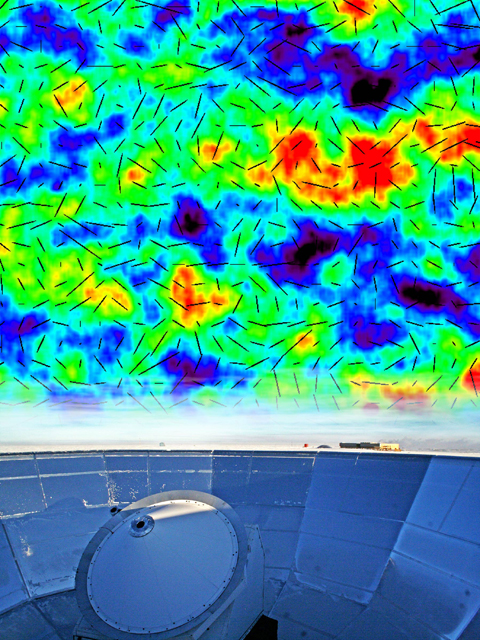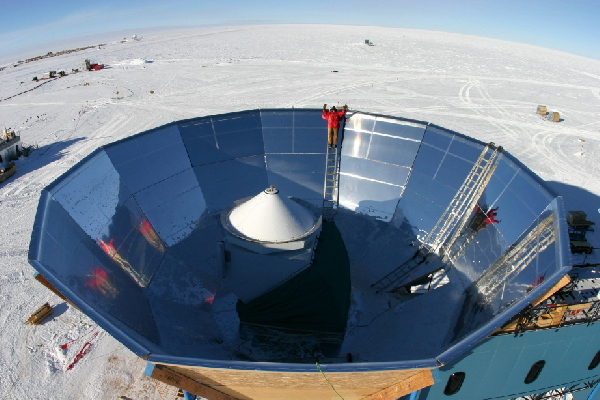Standard knowledgeSouth Pole-based experiment confirms main model for the cosmosPosted November 6, 2009
Findings by an international team of scientists using a telescope located at the U.S. Antarctic Program’s South Pole Station Their measurements of the cosmic microwave background (CMB) — a faintly glowing relic of the hot, dense, young universe — confirm a significant prediction of the standard cosmological model. Specifically, their results show that dark matter and dark energy make up 95 percent of everything in existence, while ordinary matter makes up just 5 percent. The standard cosmological model — popularly known as the Big Bang The second component, dark energy, is the energy of empty space itself. The presence of dark energy means that the universe is not just expanding, but that the expansion is accelerating. The exact nature of dark energy is unknown, but it is possible that the acceleration will continue until it rips the universe apart — billions of years into the future. “When I first started in this field, some people were adamant that they understood the contents of the universe quite well,” noted Sarah Church “But that understanding was shattered when evidence for dark energy was discovered,” added Church, the U.S. principal investigator of the South Pole QUaD telescope project 
Graphic Credit: Nicolle Rager Fuller/NSF
The QUaD telescope (bottom) allowed scientists to map the temperature and polarization of the cosmic microwave background (above).
In a paper published in the Nov. 1 issue of The Astrophysical Journal, QUaD researchers released detailed maps of the CMB. The researchers focused their measurements on variations in the CMB’s temperature and polarization to learn about the distribution of matter in the early universe. Polarization is the direction in which vibrations travel from all light rays, which is at right angles to the ray’s direction of travel. The light from the early universe was initially un-polarized but became polarized when it struck moving matter in the very early universe. By creating maps of this polarization, the QUaD team was able to investigate not just where the matter existed, but also how it was moving. The results very closely match the temperature and polarization predicted by the existence of dark matter and dark energy in the standard cosmological model. “Studying the CMB radiation has given us extremely precise pictures of the universe at just 400,000 years old,” explained Walter Gear “The fact that these superb data fit the theory so beautifully is in many ways even more amazing,” he added. “This reinforces the view that researchers are on the right track and need to learn more about the strange nature of dark energy and dark matter if we are to fully understand the workings of the universe.” QUaD is an acronym of an acronym. The QUaD (QUEST at DASI) project used the Q U Extra-galactic Survey Telescope (QUEST) instrument at the South Pole for three years, from 2005 to 2007. It was installed on the mechanical structure of a previous experiment called DASI (Degree Angular Scale Interferometer) NSF-funded research in this article: Sarah Church, Stanford University, Award Nos. 0338138, 0638615 and 0739729 |



For USAP Participants |
For The Public |
For Researchers and EducatorsContact UsU.S. National Science FoundationOffice of Polar Programs Geosciences Directorate 2415 Eisenhower Avenue, Suite W7100 Alexandria, VA 22314 Sign up for the NSF Office of Polar Programs newsletter and events. Feedback Form |


